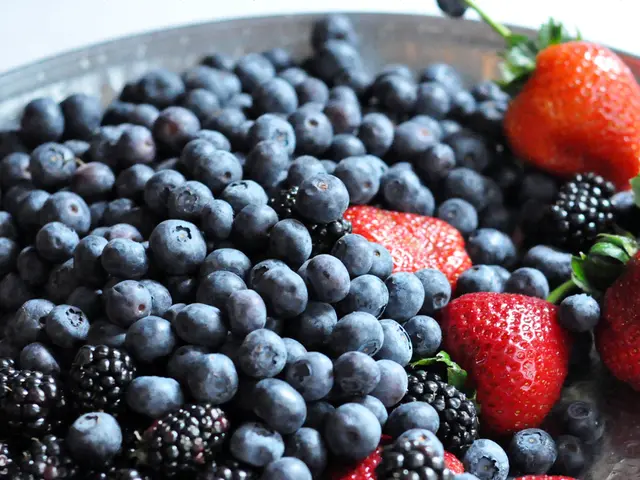Perception of Faces in Common Objects: The Mystery Behind Recognizing Figures in Toasted Bread
Experiencing the Unseen: Our Brain's Obsession with Pareidolia
Ever find a smiley face in your toast or see shapes in the clouds that look like animals? You've just had a taste of pareidolia! This peculiar phenomenon occurs when our brains perceive familiar patterns, especially faces, in random or ambiguous stimuli. Let's dive into the more intriguing side of your breakfast, folks!
Our love for faces is deeply rooted in our brains, and it goes way beyond your morning meal. Humans are social creatures, and evolved to quickly recognize and interpret faces to survive. A dedicated region in the temporal lobe called the fusiform face area (FFA) helps us with this task. The FFA becomes active when we see anything resembling a face, whether it's human or not, real or not.
This rapid recognition comes with an interesting advantage. Our brains can detect a face in as little as 100 milliseconds! That's faster than you can blink an eye. Evolution has hardwired our brains to identify a friend or foe promptly, often a matter of life or death. Even today, our brains opt for false positives (seeing patterns where there aren't any) over false negatives (missing a potential face). That's why you might see a "face" in your laundry or socket on the wall, not a glitch - it's just the FFA doing its job a little too diligently.
Pareidolia, however, isn't limited to faces. It's part of a broader mental pattern recognition system that has us discerning order in chaos, finding meaning in randomness, and noting familiar shapes in unfamiliar territory. This system can be demonstrated by patterns we spot in clouds, rocks, wood grain or marble that resemble eyes or faces, apparitions in burnt food, rust stains, or water damage. Even tech companies take advantage of pareidolia to make their products more appealing by incorporating expressions on car bumpers or vacuum cleaners.
The human brain's inclination towards patterns does more than making toast amusing; it can reveal fascinating insights about our cognitive health. With pareidolia, we gain valuable insights into brain processes, such as the brain's constant attempts to make predictions and fill in the blanks before receiving complete data. Understanding how the brain predicts, prioritizes, and processes information offers essential clues about our cognitive health and overall brain function.
Research shows that people with an active or flexible pattern recognition system might experience pareidolia more often, linking it to higher creativity, imagination, and sensory sensitivity. Conversely, reduced pareidolia could be associated with brain injuries, neurological conditions, or even certain psychiatric disorders like schizophrenia or Parkinson's disease.
While there's no need to "train" pareidolia itself, supporting the systems that help it function can benefit cognitive health. Creative endeavors, visual puzzles, brain games, or even exploring new environments can encourage mental wandering and improves recognition skills. Nootropics, such as those containing citicoline, bacopa monnieri, or Lion's Mane mushroom, may support neuroplasticity and overall brain health. These are vital factors that help the brain process, interpret, and predict sensory input and precipitate the occasional smiling slice of toast.
In conclusion, pareidolia is a captivating glimpse into the human brain. It's not just about that grinning slice of bread - it's about the incredible predictive power of the mind, its preference for patterns, and its tireless quest to find connections with the world. Whether it's a masterpiece on your breakfast plate or a seemingly ordinary encounter, pareidolia offers a fascinating peek into how our brain working, adapting, and interpreting the world. Stay curious, keep exploring, and embrace the unexpected smiles - after all, it's the brain at work!
- The fusiform face area (FFA) in our brains, a dedicated region in the temporal lobe, helps us quickly recognize and interpret faces.
- Our brains can detect a face in as little as 100 milliseconds, a testament to evolution's hardwiring for survival.
- Pareidolia, a mental pattern recognition system, extends beyond face recognition, making us find meaning in randomness and recognizing patterns in unfamiliar territory.
- Understanding how the brain processes, prioritizes, and predicts information can offer essential clues about our cognitive health and overall brain function.
- Research suggests that an active pattern recognition system might be linked to higher creativity, imagination, and sensory sensitivity.
- Supporting the systems that help pareidolia function can contribute to cognitive health, encouraging mental exploration and improving recognition skills.
- Nootropics, such as citicoline, bacopa monnieri, or Lion's Mane mushroom, may support neuroplasticity and overall brain health.
- Engaging in creative activities, visual puzzles, brain games, or exploring new environments can foster the brain's ability to process, interpret, and predict sensory input.
- Pareidolia offers a fascinating peek into how our mind works, adapts, and interprets the world, inviting us to stay curious, keep exploring, and embrace the unexpected smiles - after all, it's the brain at work in our daily lives, even with a smiling slice of toast.







